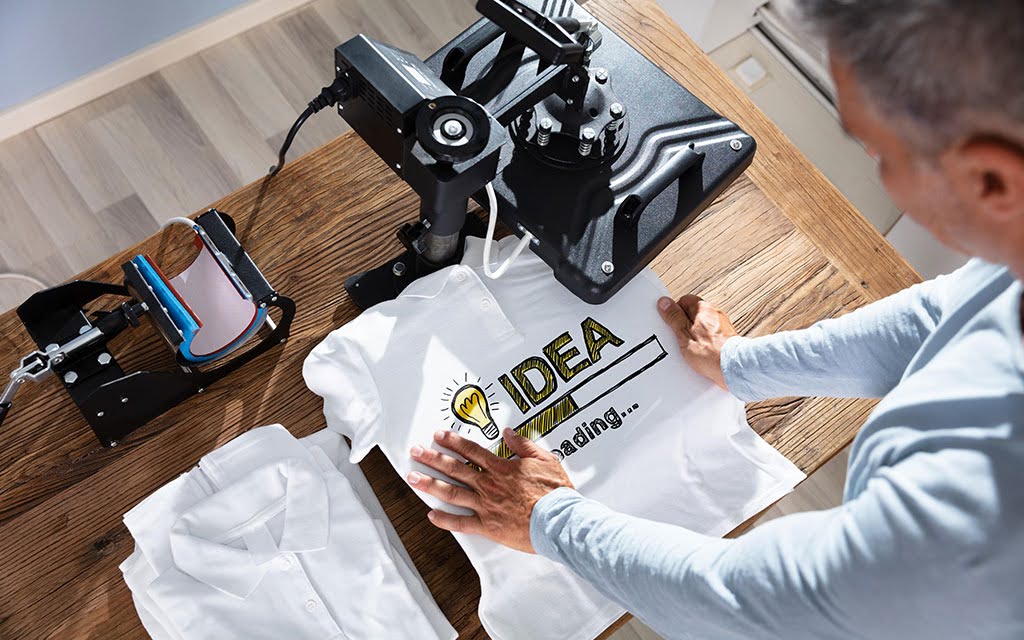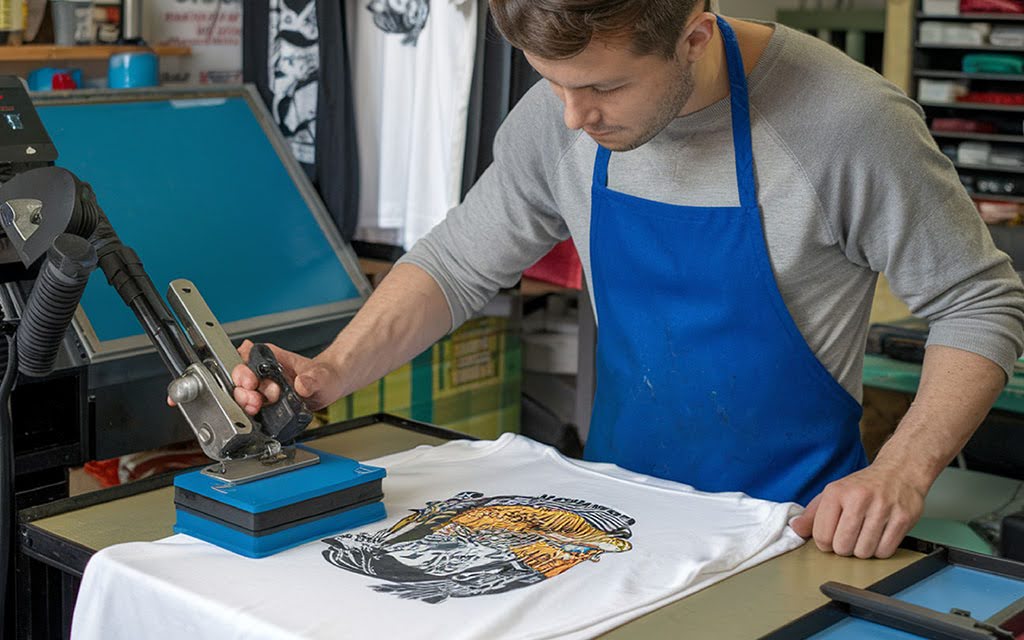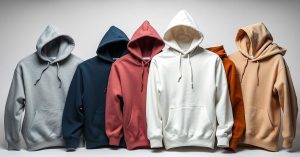When you’re considering creating custom apparel for your business, team, or personal project, understanding the various t-shirt printing methods available becomes crucial for making an informed decision. With numerous printing techniques available in today’s market, selecting the right approach can significantly impact not only the visual appeal of your finished product but also its durability, cost-effectiveness, and overall quality. The choice isn’t merely about aesthetic preferences; it fundamentally affects how your custom t-shirts will perform over time and how satisfied your customers will be with the final results.
This comprehensive guide explores the t-shirt printing methods pros and cons in detail, providing you with essential insights into popular techniques including direct-to-garment printing, screen printing, heat transfer printing, and sublimation printing. By understanding the advantages and limitations of each printing technique, you’ll be better equipped to make strategic decisions that align with your specific needs, budget constraints, and quality expectations for your next custom apparel project.
Key Takeaways
- Understanding the pros and cons of each t-shirt printing method is key for successful branding.
- Different printing methods suit various fabrics and designs.
- What you can afford affects your choice of printing technique.
- The right method can make colors pop and prints last longer.
- Custom t-shirts can be made for different groups based on printing options.
Table of Contents
Introduction to T-Shirt Printing
T-shirt printing represents the fascinating intersection where creative vision meets technological innovation, serving as the cornerstone for bringing custom apparel concepts to life.
The world of garment printing encompasses numerous printing techniques, each offering distinct characteristics and capabilities that cater to different project requirements and aesthetic goals. Understanding these various t-shirt printing techniques empowers designers, entrepreneurs, and businesses to select the most appropriate method for their specific creative endeavors.
In today’s marketplace, where personalization and uniqueness are highly valued, shirt printing has evolved to meet the growing demand for customized apparel that reflects individual style and brand identity. Technological advancements have introduced sophisticated printing methods that allow for unprecedented levels of detail, color accuracy, and production efficiency. From traditional screen printing techniques that have been refined over decades to cutting-edge DTG printing technologies that offer digital precision, the landscape of t-shirt printing continues to expand and evolve.
The journey from concept to finished custom t-shirt involves understanding not only the technical aspects of each printing method but also how these processes interact with different fabric types, design complexities, and production volumes. This knowledge enables you to make informed decisions that ensure your creative vision translates effectively into high-quality, durable, and visually appealing custom apparel.
Factors to Consider in Choosing a Printing Method
Selecting the appropriate t-shirt printing method requires careful consideration of multiple interconnected factors that directly influence the success of your custom apparel project. Before committing to any printing technique, it’s worth understanding t-shirt print vs embroidery tradeoffs, as embroidered decoration offers superior durability and premium perception for simple logos and text, while printing excels at complex, multi-colored designs. Color vibrancy, detail accuracy, and fabric compatibility form the foundation of quality considerations, as these elements determine how effectively your design onto the garment will translate and how long it will maintain its visual impact. Understanding what type of t shirt printing lasts the longest helps you balance initial costs against long-term value, particularly for items that will see heavy use or frequent washing. The complexity and intricacy of your t-shirt design significantly influence which printing technique will works best for your specific needs.
Design characteristics play a pivotal role in determining the most suitable printing option for your project, as different methods excel with different types of artwork and color schemes. For instance, DTG t-shirt printing excels when working with highly detailed, photographic designs that require precise color gradients and fine details, while traditional screen printing proves more efficient and cost-effective for simpler designs with solid colors when producing larger quantities. Understanding how your intended use and target audience will interact with the finished garment helps inform your decision-making process.
Consider these crucial factors when evaluating different types of t-shirt printing methods to ensure optimal results for your specific project requirements:
Printing Method | Color Vibrancy | Detail Accuracy | Fabric Compatibility | Cost Efficiency | Best Use Case |
Direct-to-Garment (DTG) | High | Excellent | Cotton preferred | Moderate for small runs | Complex designs, photo prints |
Screen Printing | Very High | Good | Versatile (various fabrics) | Low for bulk orders | Simple designs, large quantities |
Sublimation Printing | Vibrant | Good | Polyester required | Moderate for specialized needs | All-over printing, sports apparel |
Heat Transfer Printing | Good | Variable | Compatible with many | High for small batches | Custom logos, small orders |
Vinyl Printing | Excellent | Limited | Most fabrics | Moderate | Text, simple graphics |

Common Types of T-Shirt Printing Methods
Understanding the different types of t-shirt printing available in today’s market empowers you to make informed decisions that align with your specific project goals and requirements. Screen printing remains the gold standard for large-volume orders due to its ability to produce vibrant, long-lasting colors that maintain their intensity through countless washes, making it the best printing choice for promotional campaigns and team uniforms where durability is paramount.
Direct-to-garment printing has gained significant popularity as a versatile solution that excels in producing detailed, full-color designs with minimal setup requirements, making it particularly well-suited for small batches and personalized items. This printing method offers exceptional flexibility for businesses that need to fulfill custom orders quickly without the extensive setup time required by other printing techniques.
Sublimation printing represents a specialized approach that works exclusively with polyester and synthetic blend fabrics, creating designs that become permanently integrated into the fabric fibers rather than sitting on top of them. This printing process results in incredibly soft-feeling prints with vibrant colors that won’t crack, peel, or fade over time, making it ideal for athletic wear and custom t-shirts that require frequent washing.
Heat transfer printing provides an accessible entry point for those new to custom apparel creation, offering reasonable quality results at a budget-friendly price point for small-scale projects. When combined with vinyl printing techniques, this method can produce durable, professional-looking designs that add texture and visual interest to finished garments.
Each printing technique brings unique advantages and limitations that must be carefully weighed against your specific project requirements, including factors such as budget constraints, intended use, desired durability, and aesthetic preferences.
Direct-to-Garment (DTG) Printing
Direct-to-garment printing represents one of the most technologically advanced t-shirt printing techniques available today, utilizing sophisticated inkjet technology to print the design directly onto fabric fibers with remarkable precision and detail. This innovative printing method has revolutionized the custom apparel industry by enabling the production of highly detailed, full-color designs without the traditional limitations associated with screen printing setups.
How DTG Printing Works
The DTG printing process begins with careful fabric preparation, where the garment receives a specialized pretreatment solution that ensures optimal ink adhesion and color vibrancy. This crucial step prepares the fabric fibers to accept the water-based inks used in the printing process, creating the foundation for long-lasting, vibrant prints that maintain their quality over time.
During the actual printing process, the t-shirt is positioned on the DTG printer’s platen, and the design is printed directly onto the fabric using specialized water-based inks that penetrate the fabric fibers. If you’re wondering what ink is used for t-shirt printing across different methods, DTG relies on water-based formulations while screen printing typically uses plastisol or discharge inks depending on the project requirements. This printing method excels at reproducing complex, multi-colored designs with photographic quality, making it ideal for artwork that requires precise color gradients and intricate details that would be challenging or impossible to achieve with traditional screen printing.
Pros and Cons of DTG Printing
DTG printing offers numerous advantages that make it an attractive option for many custom apparel projects, particularly those requiring high detail and color complexity. The printing technique excels in producing vibrant, detailed prints that can reproduce photographic images and complex artwork with exceptional accuracy on various fabric types, though it works best on cotton t-shirts and cotton blends.
However, like all printing methods, DTG printing comes with certain limitations that must be considered when evaluating whether this approach aligns with your project requirements and budget constraints.
Pros of DTG Printing | Cons of DTG Printing |
High detail and color vibrancy | Higher cost per unit for large quantities |
Quick turnaround for small orders | Slower production speed compared to bulk methods |
Ideal for custom t-shirts with complex designs | Limited effectiveness on dark fabrics |
No setup costs for screen creation | Requires specialized equipment and maintenance |
Excellent for on-demand printing | Printing may fade faster than screen prints |
Screen Printing
Screen printing, also known as silk screen printing, stands as one of the most established and widely respected t-shirt printing techniques in the industry, utilizing a time-tested process that involves creating stencils on mesh screens to apply to the t-shirt layers of ink with exceptional precision and consistency. This traditional screen printing method has maintained its popularity due to its ability to produce vibrant, durable prints that withstand extensive wear and washing while maintaining their original quality and appearance, with various screen printing types available to suit different project requirements and design complexities.
How Screen Printing Works
The screen printing process begins with creating individual screens for each color in the design, where a photosensitive emulsion is applied to a mesh screen and exposed to create a stencil that allows ink to pass through specific areas. Screen printing ink is then applied to the screen and forced through the mesh onto the t-shirt using a squeegee, creating precise, consistent coverage that results in vibrant, professional-quality prints.
Each color in the design requires a separate screen and printing pass, making this printing method particularly efficient for designs with limited color palettes but potentially complex and time-consuming for multi-colored artwork. The screen printing technique excels at producing consistent results across large production runs, making it the preferred choice for bulk orders where uniformity and cost-effectiveness are primary concerns.
Benefits and Limitations of Screen Printing
Screen printing offers numerous advantages that have kept it at the forefront of commercial t-shirt printing for decades, particularly excelling in situations where large quantities of identical designs need to be produced efficiently and cost-effectively. The printing method produces exceptionally vibrant colors with excellent opacity, allowing bright designs to show clearly even on dark fabrics, while the durability of screen-printed designs makes them ideal for items that will receive frequent use and washing.
Despite its many strengths, screen printing does present certain limitations that make it less suitable for specific types of projects, particularly those requiring quick turnaround times or highly detailed artwork with numerous colors.
Screen Printing Benefits | Screen Printing Limitations |
Vibrant color reproduction with excellent opacity | High setup costs make small orders expensive |
Extremely durable prints that resist fading | Less effective for highly detailed or photographic designs |
Cost-effective for bulk orders and large quantities | Time-consuming setup process for multi-color designs |
Works well on dark and light fabrics | Limited ability to reproduce color gradients |
Consistent results across large production runs | Printing requires separate screens for each color |

T-Shirt Printing Methods Pros and Cons
Understanding the comprehensive t-shirt printing methods pros and cons enables you to make strategic decisions that align with your specific project requirements, budget constraints, and quality expectations for custom apparel creation. Each printing technique offers distinct advantages and limitations that must be carefully evaluated against your particular needs, including factors such as order quantity, design complexity, fabric type, and intended use of the finished garments.
Comparative Analysis of Printing Methods
When evaluating different t-shirt printing methods, it’s essential to consider how each technique performs across key metrics including print quality, durability, cost-effectiveness, and suitability for different types of projects. This comprehensive analysis helps identify which printing method is best suited for your specific requirements and ensures you choose the best approach for optimal results.
The following comparison provides detailed insights into how various types of t-shirt printing methods perform across critical evaluation criteria:
Printing Method | Print Quality | Durability | Cost-Effectiveness | Setup Time | Best Use Case |
Direct-to-Garment (DTG) | High | Moderate | Higher initial costs | Minimal | Complex designs, small orders |
Screen Printing | Very High | High | Best suited for large orders | Extensive | Simple designs, bulk orders |
Sublimation Printing | High | Very High | Moderate | Moderate | All-over printing, polyester garments |
Heat Transfer Printing | Moderate | Low to Moderate | Affordable for small quantities | Minimal | Single designs, custom logos |
Vinyl Printing | Excellent | High | Moderate | Low | Text, simple graphics |
Choosing the Right Method for Your Needs
Determining which printing method works best for your specific project requires careful consideration of multiple factors that influence both the production process and the final product quality. The size of your order significantly impacts which printing technique will be most cost-effective, as methods like screen printing become increasingly economical as quantities increase, while DTG printing maintains consistent per-unit costs regardless of order size.
Design complexity plays a crucial role in printing method selection, as highly detailed artwork with multiple colors and gradients may require DTG printing capabilities, while simpler designs with solid colors can be effectively produced using more traditional screen printing techniques. Consider your intended use for the finished garments, as items requiring frequent washing or heavy use may benefit from the superior durability of screen printing, while one-time event shirts might be perfectly suited to more economical heat transfer methods.
Sublimation Printing
Sublimation printing represents a specialized printing technique that utilizes heat to transform solid dye particles into gas, which then penetrates and bonds with synthetic fabric fibers to create permanent, vibrant designs that become an integral part of the garment rather than sitting on top of it. This unique printing process requires specific fabric compositions and offers distinct advantages for particular applications, making it an excellent choice for specific types of custom apparel projects.
Process and Suitable Fabrics for Sublimation
The dye sublimation printing process begins with printing on paper using specialized sublimation inks that contain dye particles designed to transform from solid to gas when exposed to heat and pressure. The printed design is then transferred to the garment using a heat press, where temperatures typically ranging from 380-400°F cause the dye to sublimate and permanently bond with the synthetic fibers.
Sublimation printing works exclusively with polyester and polyester-blend fabrics, as natural fibers like cotton cannot effectively bond with sublimation dyes. This limitation means that sublimation printing is best suited for synthetic garments and works most effectively on white or light-colored fabrics, as the dyes are translucent and will not show vibrantly on dark backgrounds.
Advantages and Disadvantages of Sublimation Printing
Sublimation printing offers unique benefits that make it particularly attractive for specific applications, especially when working with polyester garments that require vibrant, long-lasting designs. The printing process creates incredibly soft prints with no tactile feel, as the dye becomes part of the fabric rather than creating a layer on top, making it ideal for athletic wear and items that require frequent washing.
The permanent nature of sublimated designs means they won’t crack, peel, or fade over time, even with extensive use and washing, making this printing technique excellent for items that need to maintain their appearance through regular use. However, the fabric limitations and specialized equipment requirements must be carefully considered when evaluating whether sublimation printing aligns with your project needs.
Heat Transfer Printing Techniques
Heat transfer printing encompasses a versatile family of printing techniques that utilize heat and pressure to transfer designs from carrier materials onto fabric, offering accessible solutions for custom apparel creation across various scales and complexity levels. This approach includes several distinct methods, including vinyl printing, plastisol transfer printing, and direct-to-film printing, each offering unique advantages for different types of projects and design requirements.
Overview of Heat Transfer Methods
Heat transfer vinyl printing involves cutting designs from colored vinyl material and using a heat press to apply them to garments, creating durable, professional-looking results that work well for text, logos, and simple graphics. Plastisol transfer printing utilizes screen-printed plastisol inks on release paper that can be stored and applied to the t-shirt using heat activation, offering the durability of screen printing with the flexibility of transfer application.
Direct-to-film printing represents a newer innovation that combines digital printing with transfer technology, allowing for detailed, full-color designs to be printed on special film and then transferred to garments using heat and pressure. Each of these heat transfer printing methods offers distinct advantages depending on your specific design requirements, order size, and quality expectations.
Pros and Cons of Heat Transfer Printing
Heat transfer printing provides numerous advantages that make it an attractive option for many custom apparel projects, particularly those requiring small quantities or quick turnaround times. The accessibility and relatively low startup costs make these printing techniques ideal for beginners and small businesses entering the custom apparel market.
However, various heat transfer printing methods also present certain limitations that must be considered when evaluating whether this approach aligns with your project requirements and quality expectations.
Method | Benefits | Limitations |
Vinyl Transfer | Durable, excellent color retention, works on most fabrics | Limited detail complexity, higher cost for complex designs |
Paper Transfer | Detailed designs, good for color variety, low setup costs | May not adhere well on dark fabrics, less durable |
Sublimation Transfer | Ideal for polyester, vibrant colors, soft feel | Requires specific fabric type, limited to light colors |
Understanding how to keep print on shirts from cracking becomes especially important with heat transfer methods, as these prints are more susceptible to deterioration over time compared to screen printing or DTG. Proper washing techniques, avoiding high heat in dryers, and turning garments inside out can significantly extend print life regardless of which transfer method you choose.
Making the Right Choice for Your Project
Selecting the optimal t-shirt printing method represents a crucial decision that significantly impacts the success of your custom apparel project, requiring careful consideration of multiple factors including design complexity, order quantity, budget constraints, and intended use of the finished garments. Popular t-shirt printing techniques like DTG printing and screen printing offer distinct advantages for different scenarios, with DTG printing excelling in small-batch, high-detail applications while screen printing provides superior cost-effectiveness and durability for larger orders.
The t-shirt printing industry continues to evolve with new technologies and improved processes, offering increasingly sophisticated options for creating high-quality custom apparel that meets diverse needs and preferences. Whether you’re running a t-shirt business, creating promotional items, or developing custom designs for personal use, understanding how different printing methods perform across various criteria enables you to make informed decisions that align with your specific requirements.
Whether you need custom-t shirt printing for promotional campaigns, team uniforms, or retail products, the best method for your project depends entirely on your unique circumstances, including factors such as design complexity, fabric preferences, order size, budget limitations, and quality expectations. By carefully considering these elements and understanding how different printing techniques address various needs, you can confidently select the approach that will deliver optimal results for your custom apparel project while staying within your budget and timeline constraints.





